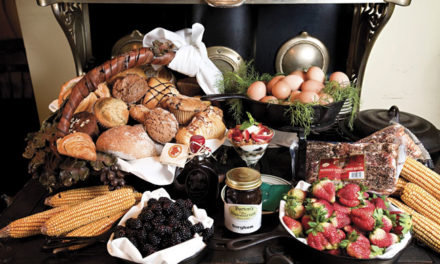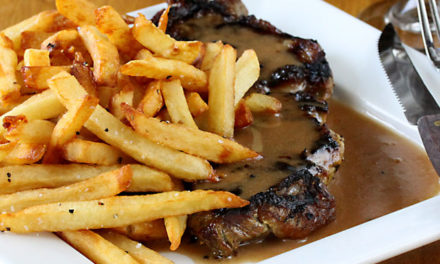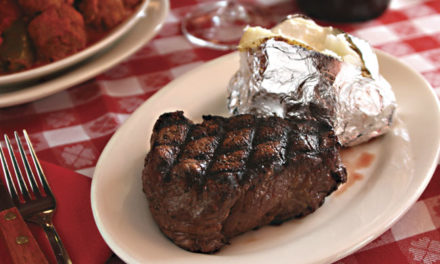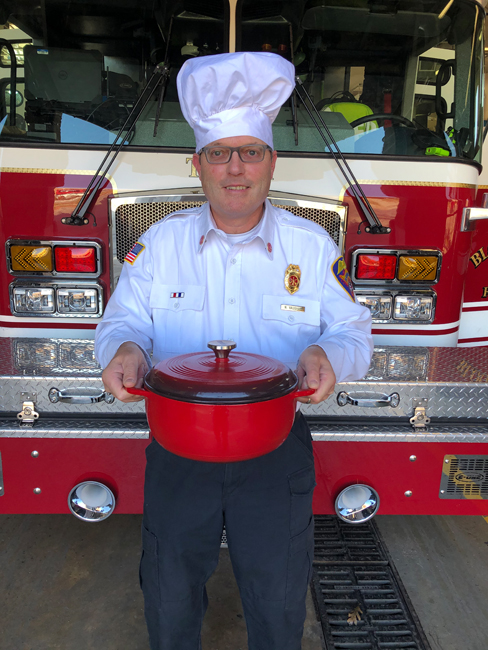
by SOPHIE BIRD
For soup-lovers searching for a good chili recipe as winter approaches, Bloom reached out to Neville Vaughan, a battalion chief with the City of Bloomington Fire Department, who created the award-winning chili recipe at the 2019 Freezefest Chilly Cook-Off.
“As firefighters, we work 24-hour shifts and much of our time is spent training, preplanning, maintaining equipment, and responding to all kinds of emergencies,” Vaughan says. “At the end of the day, eating is what brings us together. Chili is the perfect dish for us.”
And for advice on how to make great soup, Bloom contacted Nels Boerner, chef owner of Darn Good Soup, the popular restaurant on the downtown Square that closed recently. Boerner is keeping his recipes secret in the hope of reopening, but he was willing to share his top tips for making excellent soup at home.
Neville Vaughan’s Award-Winning “Chili Bombero” Recipe
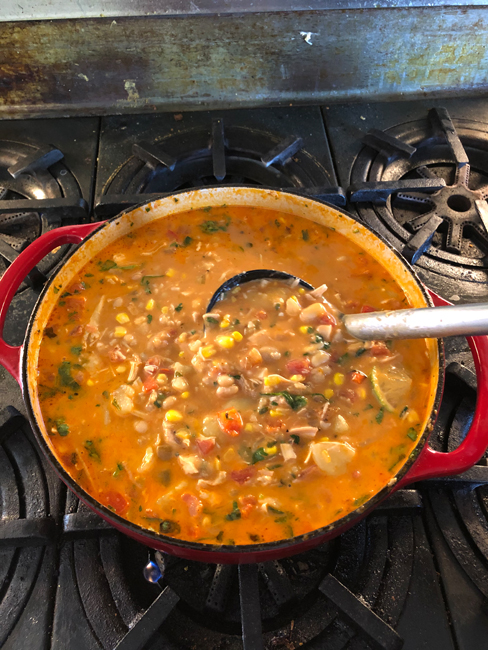
Ingredients:
- 1 pound of skinless, boneless chicken breast or thighs, cut into bite-size pieces.
- 2 cans (14.5 ounces) of chicken stock.
- 1 can (6 ounces) of tomato paste.
- 1 yellow onion, chopped.
- 3 garlic cloves, minced.
- 1 jalapeño pepper, diced.
- 1 red bell pepper, diced.
- 2 small cans (4.5 ounces) of green chilies (mild or hot to preference).
- 2 cups of frozen corn.
- 3 cans of cannellini beans, drained.
- 3 medium Yukon Gold potatoes, peeled, par-boiled, and cut into bite-size pieces.
- 2 tablespoons of fresh cilantro.
- 1 tablespoon of fresh lime juice.
- 1/2 tablespoon each of ground cumin, cayenne, and coriander.
- Chipotle chili powder to taste.
- 8 ounces of heavy cream.
YIELD: FOUR SERVINGS
Instructions:
- Heat olive oil over medium to high heat.
- Brown the chicken until no longer pink and set aside.
- Sauté onions, peppers, and garlic until soft and fragrant.
- Add seasonings and toast the spices.
- Stir in the tomato paste.
- Add chicken stock and green chilies.
- Bring to a gentle boil then reduce to a simmer.
- Mash some beans with a fork, then add them with the rest of the whole beans, potato chunks, chicken, and corn to the dish.
- To thicken, if necessary, simmer without lid or mix a tablespoon of all-purpose flour into broth from the soup and add back into the dish.
- Stir in some heavy cream for body and smoothness. • Add cilantro for pop and lime juice for zest.
- Add salt and fresh ground black pepper to taste.
- Garnish with a dollop of reduced-fat sour cream, fresh cilantro leaves, and tortilla chips.
Nels Boerner’s Top 4 Tips for Making Darn Good Soup
1. Use a good stock
“It’s really important to start with a good stock, getting down to really basic things,” Boerner says. He suggests homemade stock, a good stock concentrate, or a 1-liter boxed stock from the grocery store.
When asked what makes a good stock, Boerner’s answer is simple: One that tastes good.
“If you have a little sip of the stock and you’re like, ‘Meh,’ then you’ll be pretty well guaranteed that your soup is going to taste ‘meh.’ A stock should be something that warms your belly, and you think to yourself, ‘Mmm, that tastes good.’”
2. Use fresh, quality ingredients
It can be tempting to use ingredients you have around the house, but Boerner cautions against this. Your soup will only taste as good as the stuff you put in it.
“Don’t use cheap meats and cheap vegetables or rotten vegetables,” he warns. “A lot of people are like, ‘Oh, I’ve got this stuff in the fridge. It’s been there forever, I guess I’ll make soup,’ but that’s not a good way to do it.”
3. Don’t be afraid to use seasoning
Because soup is primarily made of liquid, any seasoning you put in will be diluted. “You need a lot of seasoning,” Boerner says.
When it comes to herbs, Boerner recommends taking some advice from Simon & Garfunkel. “Parsley, sage, rosemary, and thyme,” he says. “I like to throw a little oregano in there, too.”
For spices, he favors paprika and cumin.“If I’m trying to create a recipe or create something from scratch, I think about the main ingredients. Like maybe I’m making a soup with pork, so I think about how pork tastes and then I go to my spices and herbs and I start opening up containers and smelling them. If one smells particularly good with the taste of pork in my mind, then I say, ‘Oh, okay, I’ll use that one.’” Boerner says. “I let my nose and flavor memory guide me. That’s a really good thing to do with cooking in general.”
4. Don’t forget the black pepper
“You pretty much need to have black pepper in most things just because it’s a ubiquitous undertone in our collective cultural palate,” Boerner explains. “It’s kind of like having air to breathe—it’s just there, and if you don’t put it in, people can’t really put their fingers on it, but they’re like, ‘It’s not quite right.’”



